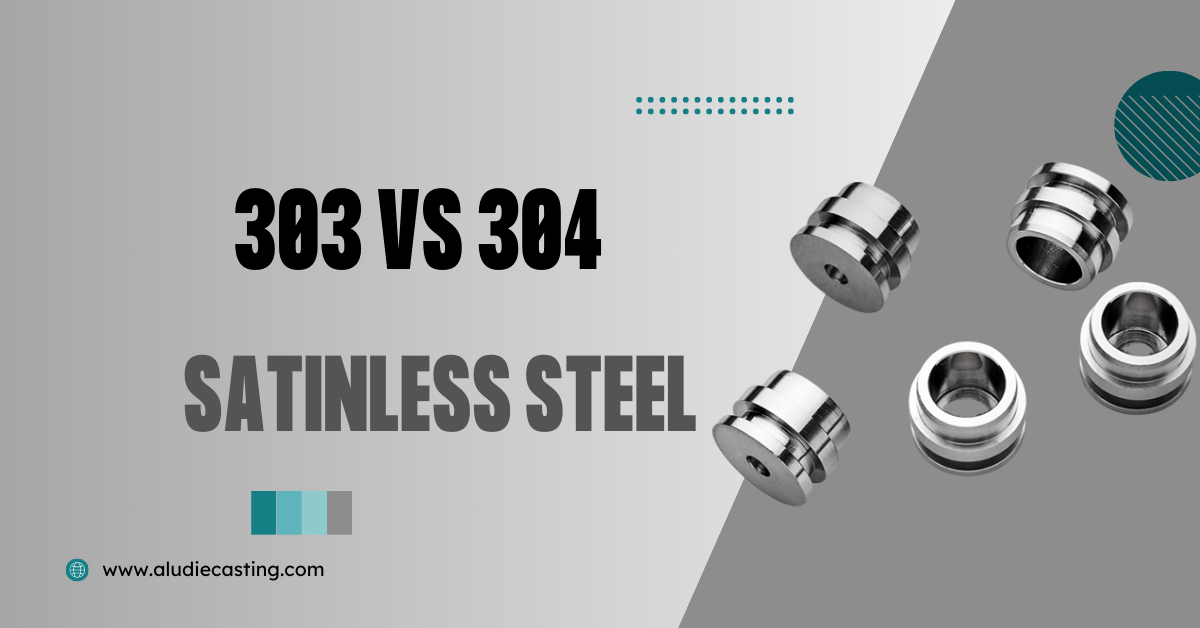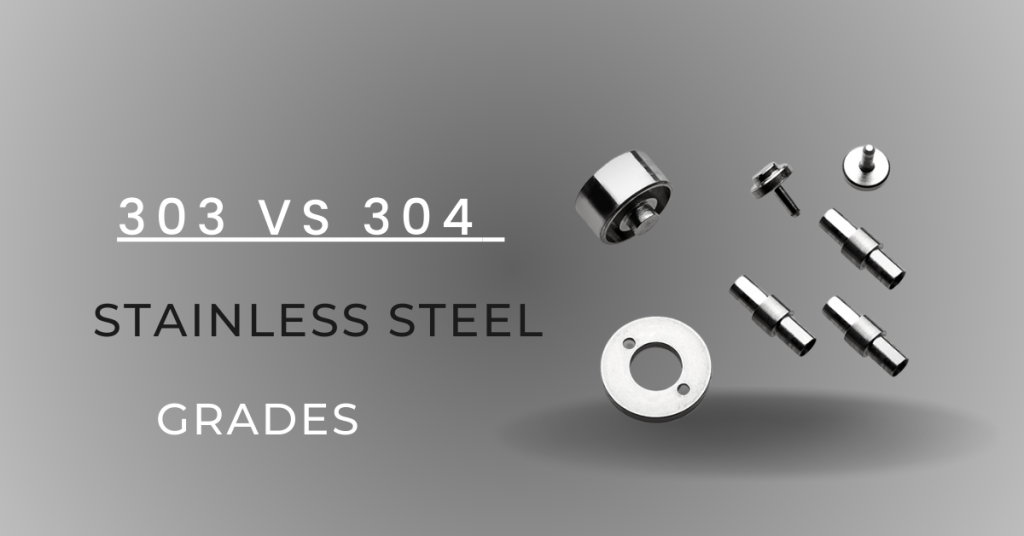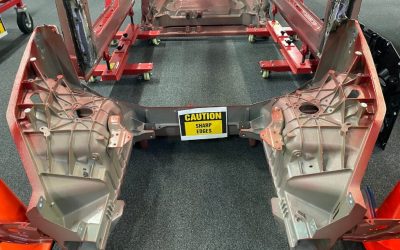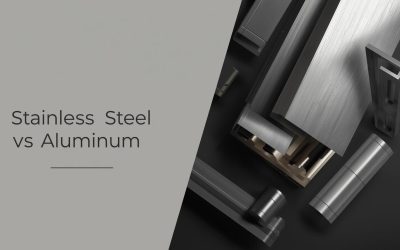In selecting the most suitable stainless steel for your project, you must understand the main differences between common grades. Two of the most widely used austenitic stainless steels are AISI 303 and AISI 304 (also known as SS 303 and SS 304).
However, they have different features that make them good for certain purposes. This guide will provide insight into features of 303 versus 304 stainless steel.
But how can you choose the appropriate grade between them that suits your applications?
Understanding Stainless Steel Grades
Being an adaptable and economical material, stainless steel is recognized for its good resistance to oxidation and some forms of corrosion with an austenitic structure. For instance, 303 and 304 austenitic grades are frequently used.
They are easy to shape and offer excellent resistance to corrosion and preferred formability. However, grade selection is quite similar to selecting the correct tool for the work; it has to be perfect for the operation. You can learn more in our guide, to achieve the highest result for the material’s work and its durability.
303 vs 304 Stainless Steel Grades
Despite being austenitic stainless steels and having a similar chemical base, both grades offer comparable features of excellent resistance to corrosion and nonmagnetic properties. With a sulfur content ranging from 0.15% to 0.35%, 303 is an austenitic stainless steel grade that offers exceptional machinability.
303 stainless steel vs 304 stainless steel: Comparison Table
|
Property |
303 Stainless Steel |
304 Stainless Steel |
|
Chemical Composition |
17% Chromium, 8% Nickel, 0.15% Sulfur/Selenium (min) |
18% Chromium, 8% Nickel (min) |
|
Machinability |
Excellent (due to sulfur/selenium) |
Good |
|
Weldability |
Poor |
Good |
|
Formability |
Good |
Good |
|
Tensile Strength (MPa) |
510-590 |
535-750 |
|
Yield Strength (MPa) |
205-290 |
205-325 |
|
Elongation (%) |
40-60 |
40-60 |
|
Density (g/cm³) |
7.93 |
7.93 |
|
Corrosion Resistance |
Moderate |
Excellent |
|
Cost |
Lower |
Higher |
It contains 8%–10% nickel and 18% chromium. The sulfur content largely offsets the corrosion resistance that this would normally offer. As a result, there is a small reduction in toughness and a decrease in corrosion resistance.
Being easily machinable comes with a trade-off. It can frequently be more expensive than alloy 304 because it does not require as much labor to form and press. Even though 303 is not as resistant to corrosion as 304 is, it is still quite resistant to oxidation when exposed to temperatures as high as 1400 °F on occasion.
Keep in mind that the sulfur content makes 303 poorly weldable, which may cause cracking. Additionally, selenium is occasionally used in place of sulfur. This has the same result as sulfur, improving machinability and lowering corrosion resistance.
Understanding Machinability of 304 vs 303 stainless steel
Grade 303
The 303 grade of stainless steel is referred to as the king of machineability due to the presence of sulfur or selenium in it. This makes it possible to improve the mechanical characteristics of an alloy with the help of 303-grade free-cutting properties. It allows the manufacturers to produce large volumes rapidly and in a cleaner-cut way.
This grade is suitable for applications requiring intricate shapes and fine details, offering precision machining facilities. It lowers the chances of tool wear and extends the longevity of cutting tools.
They make it an affordable choice for high-volume manufacturing. However, the trade-off slightly causes a reduction in resistance to corrosion, which may limit its use in certain environments.
Grade 304 – A Balancing Act
Since grade 304 work hardens rapidly, machinability is an issue for grade 303. Contrary to grade 303, the chemical composition of stainless steel grade 304 is preferred in many industries due to its reliability and robustness, despite its lower machinability. Its balance of good formability and excellent resistance to corrosion makes it a versatile option.
This grade is widely used to produce applications where both machining and welding are needed, like kitchen equipment, architectural structures, and chemical containers. Their excellent anti-corrosion characteristics ensure that they can withstand harsh conditions without compromising their integrity.
Mechanical Properties
The 303 and 304 grades of stainless steel share the same properties except for the melting point. Their density would be the same when they had a slightly different chemical composition. Their crystal structures are very similar, with the atoms arranged in a regular, repeating pattern, as they are austenitic stainless steel alloys.
304 has a little more chromium, though not always. The sulfur inclusion has no impact on the crystal structure or the spacing of interatomic particles in any meaningful way.
|
Properties |
303 Grade of Stainless Steel |
304 Grade of Stainless Steel |
|
Density |
0.289 lb/in³ |
0.289 lb/in³ |
|
Melting Point |
2550 – 2590°F |
2642°F |
|
Modulus of Elasticity |
28,000 ksi |
28,000 ksi |
|
Electrical Resistivity |
0.72 x 10⁻⁶ Ω·m |
0.72 x 10⁻⁶ Ω·m |
|
Thermal Conductivity |
112 BTU-in/hr-ft²-°F |
112 BTU-in/hr-ft²-°F |
|
Shear Modulus |
11,200 ksi |
11,200 ksi |
Austenitic Structure and its Impact
The grades of stainless steel provide non-magnetic properties along with formability while contributing to the austenitic structure. Their austenitic structure helps to produce specific applications where high toughness and durability are required.
It enables the material to maintain its strength at high temperatures. That caters to manufacturing automotive and aerospace products. Additionally, this austenitic structure can be used in the environment to overcome high mechanical stress.
Comparison of Strengths
Because Grade 303 contains selenium or sulfur, it performs slightly better in terms of yield and tensile strength than Grade 304. However, it is essential to consider other factors of toughness and ductility while choosing the appropriate grade between 303 and 304.
The selection of grades relies on the specific requirements of the applications. That may involve mechanical stresses, exposure to corrosive elements, and the need for machineability or weldability.
Heat Treatment and Formability
Solution Treatment
Solution treatment is the process that beneficially improves the grain structure and overall formability of 303 and 304 grades. This process involves heating the alloys to a high temperature and then rapidly cooling them. That enhances the mechanical characteristics and performance of the material.
Furthermore, this process helps to dissolve any precipitates that may have formed during progress to ensure a uniform microstructure. It helps improve the ductility and toughness of the alloys, making them easier to form and shape.
Weldability Differences
The presence of sulfur or selenium in grade 303 can cause hot cracking during the welding process. Conversely, grade 304 has the capability of better weldability, which can make it suitable for use in applications that require extensive welding.
Consider this differential factor while choosing your desired grade for your project. Construction of pipelines, tanks, and other structures where welding is necessary adapts to grade 304. Their ability to provide strong, durable welds can withstand various stresses.
Cost 303 stainless steel vs 304 stainless steel
Cost consideration is an important aspect of choosing between the grades of 303 and 304 for your project. The primary components of these grades are the market prices for chromium and nickel. That fluctuates based on supply and demand, geopolitical events, and mining activities. These fluctuations impact the overall prices of stainless steel material in the market.
- Market Price Fluctuations
- Grade 303 – Generally Lower Cost
- Grade 304 – Slightly Higher Cost
Market Price Fluctuations
Nickel and chromium costs can differ due to various aspects and can be influenced by mining output, global demand, and political stability. Their prices fluctuate because of the manufacturer’s demand and supply, leading to price swings and affecting the cost of stainless steel.
Grade 303 – Generally Lower Cost
The lower nickel content and faster machineability of grade 303 make it less expensive than grade 304. Its properties reduce production time and labor costs and the addition of sulfur or selenium improves its machinability. That leads to quicker production processes and lower manufacturing expenses.
Grade 304 – Slightly Higher Cost
The higher nickel content and excellent resistance to corrosion presence in grade 3034 make it slightly more expensive than grade 303. Meanwhile, the lower maintenance requirement and the material’s durability can offset its higher cost. The lower maintenance requirements make grade 304 a cost-effective choice across various industries.
Common Applications of ss 303 vs 304
303 vs 304 stainless steel uses are often similar. Specifically, 303 and 304 are commonly used in various applications. They are outlined below, highlighting the specific reasons for their usage.
|
Industry |
Stainless Steel 303 Applications |
Reason for Use |
Stainless Steel 304 Applications |
Reason for Use |
|
Food Preparation Equipment |
Conveyors, trays, carts & refrigeration units |
Easy to clean |
Tanks, pipes & containers |
Corrosion resistance, easy to clean |
|
Aircraft |
Shafts, gears, and aircraft fittings |
Non-seizing and non-galling properties, high machinability |
Aircraft structures, engines |
Excellent resistance to corrosion, thermal stability, and strength-to-weight ratio |
|
Fastening Components |
Screws, nuts, and bolts |
High machinability – easy to produce intricate shapes |
Screws, nuts, and bolts |
Durability and corrosion resistance |
|
Electronic Components |
Spacers, brackets, and venting elements |
Non-magnetic, high machinability |
Spacers, brackets, and venting elements |
Non-magnetic and low resistant to corrosion |
|
Industrial Applications & Machinery |
Bushings, fittings, valve bodies, valves, forged shafts, and valve trim |
High machinability – easy to produce complex shapes with precise tolerances & tight fits |
Tanks, pipes, fittings, and valve bodies |
Corrosion resistance, durability |
|
Consumer Appliances |
Appliance fittings, screws, and bolts |
High machinability |
Refrigerators, Kitchen sinks, and dishwashers |
Durability, resistance to corrosion, and aesthetic appeal |
|
Automotive |
Shafts, fittings, and gears |
High machinability, ease of fabrication |
Exhaust systems, trim & grilles |
Corrosion resistance, aesthetic appeal |
|
Medical Equipment |
Surgical instruments, dental implants |
High machinability, non-magnetic |
Surgical instruments, dental instruments & implants |
Biocompatibility, corrosion resistance, and high-temperature cleaning processes |
|
Chemical Processing Equipment |
Valve bodies, fittings, and bushings |
High machinability, ease of fabrication |
Reactors, tanks & pipelines |
Corrosion resistance stands up to a range of chemicals |
Corrosion Resistance
Stainless steel is the top-rated material that is widely used in a variety of machining applications. Therefore, finding the perfect match material is crucial to obtaining the desired result of parts. Besides their advantageous mechanical and chemical properties, stainless steel grades possess different corrosion resistance properties.
- Pitting Resistance and the Role of Chromium
- Durability Comparison in Different Environments
Pitting Resistance and the Role of Chromium
All of the austenitic stainless steel types have excellent corrosion resistance; pitting corrosion happens when the material is exposed to chloride environments. In particular, both grades contain high levels of chromium, which can prevent this type of corrosion. However, some variants of grade 304 offer an edge in resisting pitting corrosion due to their higher chromium content.
Durability Comparison in Different Environments
All atmospheric sources, sterilizers, organic chemicals, and dyes cannot cause Type 303 to corrode. They withstand halogen acid poorly, sulfuric acid somewhat, and nitric acid well.
For maximum corrosion resistance, all components constructed from grade 303 should be cleaned. They should be passivated after CNC machining to remove grease, oil, fingerprints, and other foreign particles, such as leftover iron particles, from the tooling.
Conclusion:
Despite containing similar properties, 303 vs 304 stainless steel grades exhibit distinct differences. That presents a challenging aspect in selecting the suitable material for specific applications. Due to the enhanced machinability of grades, 303 is ideal for parts requiring detailed machining. Additionally, this grade trades off some corrosion resistance because of the presence of a higher sulfur content.
Conversely, stainless steel grade 304 provides excellent resistance to corrosion and is suitable for a wider range of applications. That makes it a more versatile option for environments where corrosion is a concern.
The selection of grades depends on the requirements of a project, considering factors like environmental exposure, machining requirements, and cost-effectiveness. Thoroughly understanding these grades helps the manufacturer achieve the desired output, capitalizing on their unique properties.







0 Comments